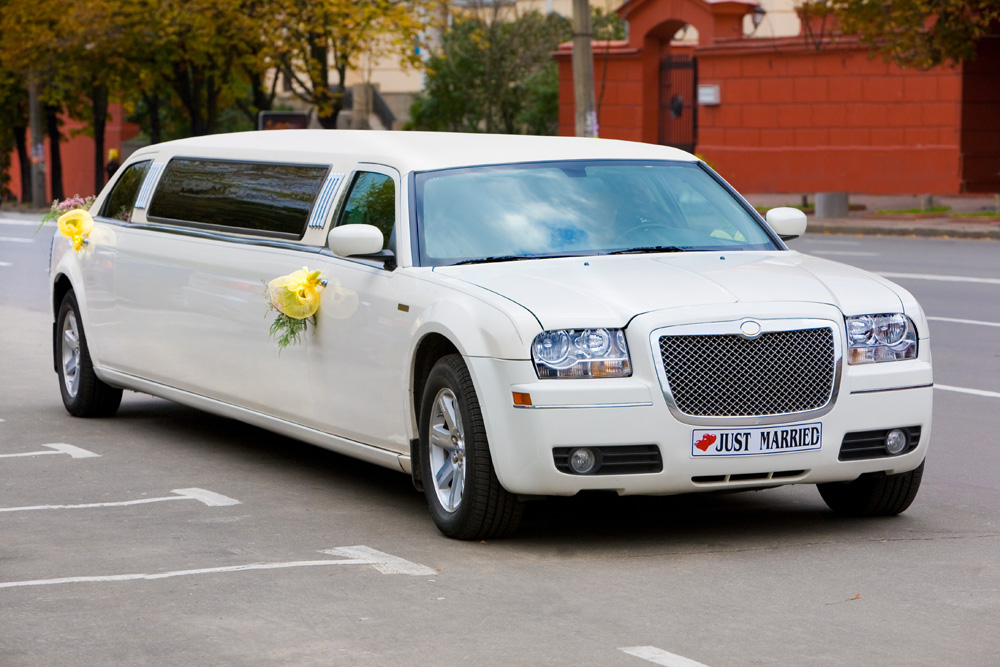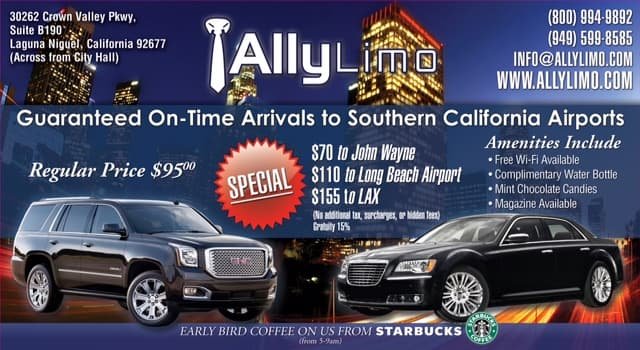Have you ever wondered why a luxury vehicle is called a “limo”? The term itself is quite intriguing, and it sparks curiosity about its origin and significance. Interestingly, the word “limousine” actually has French roots, and its etymology can be traced back to the Limousin region in France. But why did this region become associated with elegant vehicles? Let’s explore the fascinating history behind the name.
The term “limousine” was initially used to describe a specific type of horse-drawn carriage that originated in the Limousin region of France. These carriages were known for their extended enclosed compartments, which provided privacy and comfort for passengers. As the automobile industry evolved, the design of these carriages was adapted to create luxurious and elongated cars, often used to transport wealthy individuals or VIPs. Today, the term “limousine” is widely used to refer to any luxury vehicle with a lengthened wheelbase, offering an elevated level of comfort and sophistication to its occupants.
A limousine, commonly referred to as a limo, got its name from the French word “limousin,” which means a region in France. The original limousines were long, luxurious cars with a covered compartment for the driver, and an open compartment for the passengers. The division between the two compartments resembled the hooded cloaks worn by shepherds in the Limousin region. Over time, the term “limousine” became synonymous with luxury and chauffeured transportation.

Why is It Called a Limo?
In the world of luxury transportation, the term “limo” is synonymous with elegance, style, and VIP treatment. But have you ever stopped to wonder why it’s called a limo? What is the origin of this iconic name that represents the epitome of luxury and sophistication? In this article, we will delve into the history and etymology of the word “limo” and explore the reasons behind its usage in the context of luxury transportation.
The Origin of the Term “Limo”
The term “limo” is derived from the word “limousine.” The word “limousine” has its roots in the French region of Limousin, which is located in the central part of the country. The region of Limousin is known for its rich history and culture, and it was here that the stagecoaches used to transport passengers were initially manufactured. These stagecoaches, known as “carrosses de Limousin,” eventually became synonymous with luxury and comfort.
Over time, the term “limousine” started to refer to any luxurious and spacious vehicle, often with a chauffeur. It became associated with high-end transportation and was adopted to describe the sumptuous cars that were customized for the rich and famous. As the popularity of chauffeur-driven cars grew, the term “limousine” shortened to “limo” colloquially, and it has since become the standard term for luxury vehicles.
Distinctive Features of a Limo
There are several key features that distinguish a limo from other types of vehicles:
- Long Wheelbase: Limousines typically have an extended wheelbase compared to regular cars, allowing for additional legroom and a more spacious interior.
- Luxurious Amenities: Limos are equipped with a range of luxurious amenities, such as leather seating, minibars, mood lighting, and state-of-the-art entertainment systems.
- Privacy: Many limos have tinted windows and partition screens, ensuring privacy for the occupants.
- Chauffeur Service: A professional chauffeur usually accompanies a limo, providing a premium level of service and ensuring a comfortable and stress-free ride for the passengers.
All of these features contribute to the allure and exclusivity associated with the term “limo.”
Different Types of Limos
The term “limo” encompasses a wide variety of luxury vehicles, each offering its unique style and amenities. Some of the most popular types of limos include:
| Stretch Limousines | These are the most common type of limos, featuring an extended wheelbase and a stretched passenger compartment. |
| Sedan Limousines | These are luxury sedans that have been modified to provide additional legroom and comfort. |
| SUV Limousines | These are sport utility vehicles that have been converted into limos, offering a spacious interior and an imposing presence on the road. |
| Party Buses | These are large limousine buses that can accommodate a large number of passengers. They are equipped with various entertainment features, such as dance floors, bars, and sound systems. |
These are just a few examples of the diverse range of limos available, catering to different needs and preferences.
The Appeal of Riding in a Limo
So, why do people love riding in a limo? What is it about this mode of transportation that holds such appeal? The answer lies in the unique experience that a limo offers. Whether it’s a wedding, prom night, corporate event, or a special night out, riding in a limo elevates the occasion to a whole new level of luxury and sophistication.
Here are some reasons why riding in a limo is so popular:
- Exclusivity: Traveling in a limo gives a sense of exclusivity and prestige. It is a symbol of luxury reserved for special occasions and notable individuals.
- Comfort and Style: Limos provide a level of comfort and style that is unmatched by regular transportation. Plush interiors, high-quality materials, and expert craftsmanship create an ambiance of luxury.
- Celebratory Atmosphere: The spaciousness and amenities of a limo make it the perfect setting for celebrations. Whether it’s popping champagne, enjoying music, or simply reveling in the company of friends, a limo adds to the festive atmosphere.
- Convenience and Safety: With a professional chauffeur behind the wheel, passengers can relax and enjoy the ride without worrying about directions, traffic, or parking. It provides a stress-free and safe transportation option.
These factors contribute to the allure and desirability of riding in a limo, making it a memorable experience for anyone fortunate enough to indulge.
Why is the Term “Limo” Used?
The term “limo” is used as a shortened form of “limousine” for convenience and ease of communication. It has become the widely recognized and accepted term for luxury vehicles that provide chauffeur-driven transportation. The word “limo” has gained popularity due to its simplicity and the association it carries with elegance and sophistication.
While the exact origins of the term are not definitive, its usage has become ingrained in the English language and the luxury transportation industry. The word “limo” has transcended its origins and has become a globally recognized symbol of opulence and grandeur.
Key Takeaways – Why is It Called a Limo?
Have you ever wondered why they are called “limos”? Here are some key takeaways:
- The word “limousine” comes from the French region of Limousin, where shepherds wore hooded cloaks that resembled the covered compartment of the car.
- Originally, limousines had a separate compartment for the driver, which was covered, while the passengers rode in an uncovered area.
- Over time, the term “limousine” evolved to refer to any vehicle with a partition between the driver and the passengers.
- Limousines are often associated with luxury and glamour due to their use by celebrities and dignitaries for special occasions.
- Today, limousines are available in various styles and sizes, including stretch limos, SUV limos, and even party buses.
Frequently Asked Questions
Have you ever wondered why it’s called a limo? In this article, we’ll answer that question and explore the origins of this iconic mode of transportation.
1. What is the origin of the term “limo”?
The term “limo” is actually a shortened form of the word “limousine.” It is derived from a region in France called Limousin, which is known for its distinct style of hooded cloak. In the early days of automobile transportation, chauffeurs often wore similar cloaks to protect themselves from the elements. Over time, the term “limousine” became associated with luxury vehicles, and the name stuck.
Although the style of the hooded cloak and the limousine car may not have any direct connection, the association of the term “limousine” with luxury and exclusivity remains.
2. When was the first limousine introduced?
The first limousine, as we know it today, was introduced in 1902 by a French automaker named Henri-Marie-Gustave Hermann. His creation, named “limousine” because of its spacious and luxurious interior, featured a separate compartment for the driver. This division between the driver and the passengers became a defining characteristic of limousines.
Since then, limousines have evolved and become a symbol of elegance and prestige.
3. How did limousines become popular among celebrities?
Limousines gained popularity among celebrities in the early 20th century when they were used by movie stars in Hollywood. These luxurious vehicles provided privacy, comfort, and style, making them the perfect transportation choice for high-profile individuals.
As the entertainment industry grew, so did the demand for luxurious transportation options. Today, it is common to see celebrities arriving at red carpet events in glamorous limousines.
4. What are some of the features of modern limousines?
Modern limousines come equipped with a wide range of features to enhance the comfort and convenience of passengers. Some common features include:
– Plush leather seating
– Entertainment systems with flat-screen TVs
– Mini-bars or refrigerators
– Mood lighting
– Sound systems with premium speakers
– Privacy dividers
These features combine to create a luxurious and enjoyable experience for those traveling in a limousine.
5. Are there different types of limousines?
Yes, there are various types of limousines available to cater to different needs and preferences. Some popular types include:
– Stretch limousines: These are traditional limousines that have been elongated to accommodate more passengers.
– SUV limousines: As the name suggests, these are limousines based on SUVs, offering a more spacious interior.
– Party buses: These are large vehicles designed for group celebrations, with features such as dance floors and entertainment systems.
– Vintage limousines: These are classic cars that have been restored and converted into luxurious limousines.
Each type of limousine offers a unique experience, allowing individuals to choose the one that suits their specific requirements.
So why is it called a limo? The term “limousine” originally referred to a type of covered carriage with an open driver’s seat. Over time, it evolved to describe the luxurious and elongated automobiles that we now know as limousines. These vehicles are often associated with luxury and prestige, and they are commonly used for special events or transportation services.
Today, the term “limo” is used as a shorthand for limousine and has become a widely recognized term. Whether it’s a sleek and stylish stretch limo or a luxurious SUV limo, these vehicles offer a touch of elegance and sophistication. So the next time you see a limo, you’ll know that it’s more than just a fancy car – it’s a symbol of luxury and grandeur.






